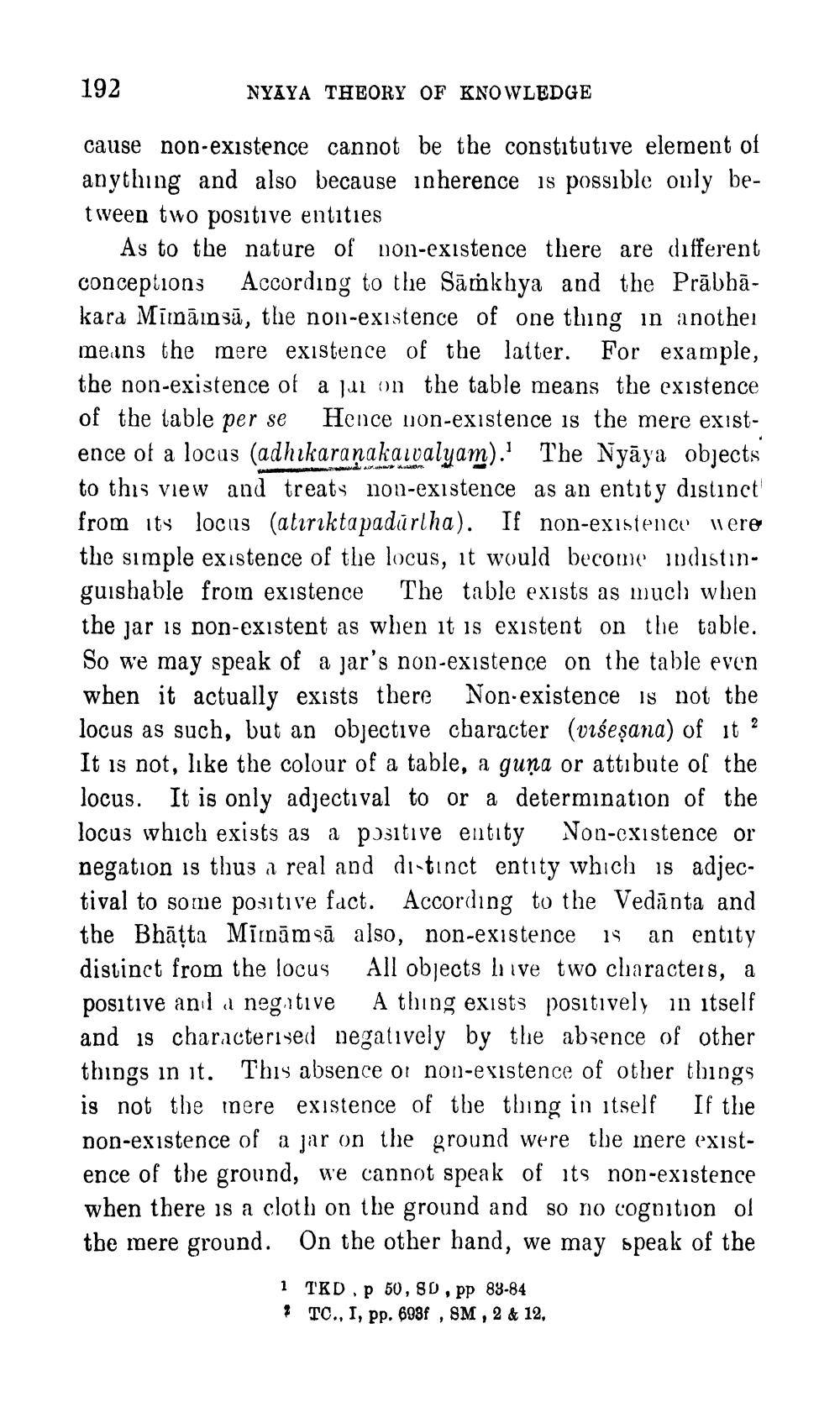________________
192
NYAYA THEORY OF KNOWLEDGE
cause non-existence cannot be the constitutive element of anything and also because inherence is possible only between two positive entities
As to the nature of non-existence there are different conceptions According to the Sāmkhya and the Prābhākara Mimāınsā, the non-existence of one thing in another means the mere existence of the latter. For example, the non-existence of a jill on the table means the existence of the table per se Hence non-existence is the mere existence of a locus (adhikaraṇakaivalyam). The Nyāya objects to this view and treats non-existence as an entity distinct from its locus (atırıktapadürlha). If non-existence nere the simple existence of the locus, it would become mdistinguishable from existence The table exists as much when the jar is non-existent as when it is existent on the table. So we may speak of a jar's non-existence on the table even when it actually exists there Non-existence is not the locus as such, but an objective character (viseșana) of it? It is not, like the colour of a table, a guņa or attıbute of the locus. It is only adjectival to or a determination of the locus which exists as a positive entity Non-existence or negation is thus a real and di-tinct entity which is adjectival to some positive fact. According to the Vedānta and the Bhāțta Mirnām sā also, non-existence is an entity distinct from the locus All objects live two characters, a positive anil a negitive Athing exists positively in itself and is characterised negatively by the absence of other things in it. This absence or non-existence of other things is not the mere existence of the thing in itself If the non-existence of a jar on the ground were the mere existence of the ground, we cannot speak of its non-existence when there is a cloth on the ground and so no cognition of the mere ground. On the other hand, we may speak of the
1 TKD , p 50, 80, pp 83-84
TC., 1, pp. 698f , SM, 2 & 12.




